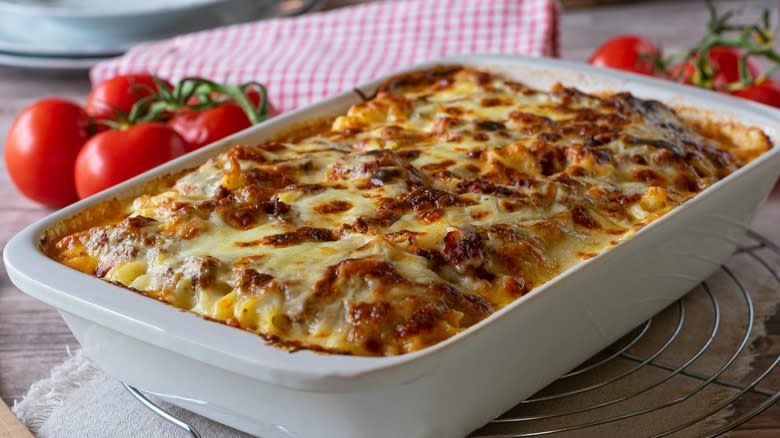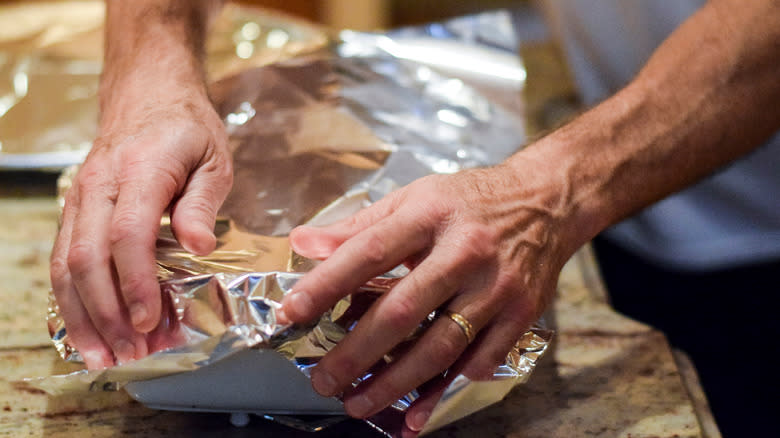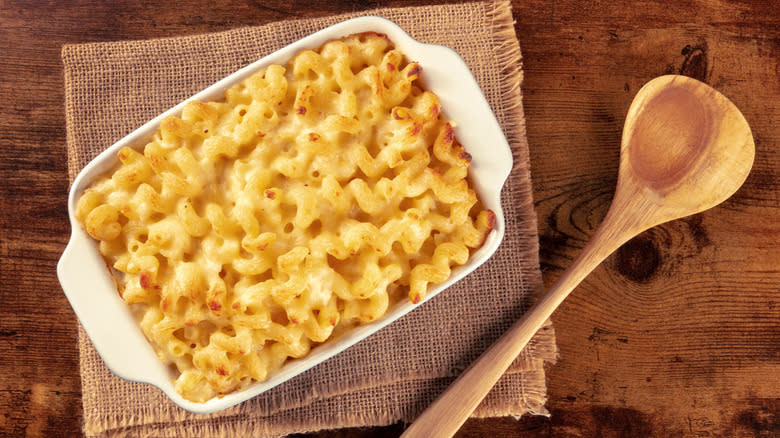Is It Better To Bake A Casserole Covered Or Uncovered?

If you're searching for something warm, comforting, and crowd-pleasing for dinner, look no further than a classic casserole. There are hundreds of varieties and recipes to choose from, and you can make an entire meal in just one pan. When it comes to the baking part, however, it can be a little confusing. Some recipes say to leave the casserole uncovered the entire time it's in the oven, while others say to cover it. Which one is true? The short answer is both. Covering a casserole traps heat and steam and gets the casserole cooking. However, you also have to take the cover off to get a crunchy, browned top.
Covering a casserole in the oven depends on what you're making, and whether or not the ingredients inside are already cooked when the dish goes into the oven. Covering and uncovering also come down to timing. Make sure to always follow your casserole's recipe because most likely it will need some time with a cover on in the beginning, and some time uncovered at the end.
Read more: French Cooking Tricks You Need In Your Life
How Covering A Casserole Helps It Cook

The primary reason for covering a casserole as it bakes is to trap moisture inside the dish. This will not only keep the casserole itself moist, but it will also help get the casserole up to cooking temperature. This is important because a lot of casseroles are very dense and heavy, like a classic lasagna, and it can take a long time for heat to reach the center.
Covering a casserole is especially important if you're making anything with uncooked ingredients that need a lot of moisture. A rice-based casserole like chicken broccoli and rice, for example, especially needs that steam trapped so that the rice has a chance to soak up all the liquid in the pan. Other dense recipes, like scalloped potatoes, need ample time under a cover to do their thing.
You don't need an actual casserole lid to get the steaming effects, either. If your recipe calls for covering the casserole, you can simply wrap a layer of aluminum foil over the top of the dish and seal the sides to get the same outcome.
When To Remove The Cover

Almost all casserole recipes call for covering the dish for at least a portion of the baking process. However, if all of the ingredients are already cooked before the pan goes in the oven, there probably isn't a lot of covering time needed. Baked macaroni and cheese, for example, is typically fully cooked before it's spread out in the pan. All you're doing is heating it and browning the top, so you don't usually need a lid.
For casserole recipes that start in the oven with a lid, at some point, you'll need to uncover it and let the steam out. This is how the top layer gets brown and toasted, especially if you've topped it with breadcrumbs or anything else that's supposed to be crunchy. A well-written recipe will tell you exactly when to do this, but if not, a good rule of thumb is to take the lid off about halfway through. This will give your casserole enough time to lock in the heat and moisture while also getting a perfect, crisp topping.
Read the original article on Daily Meal.

